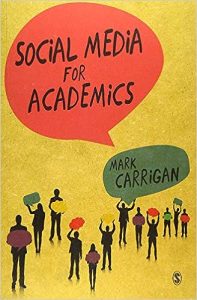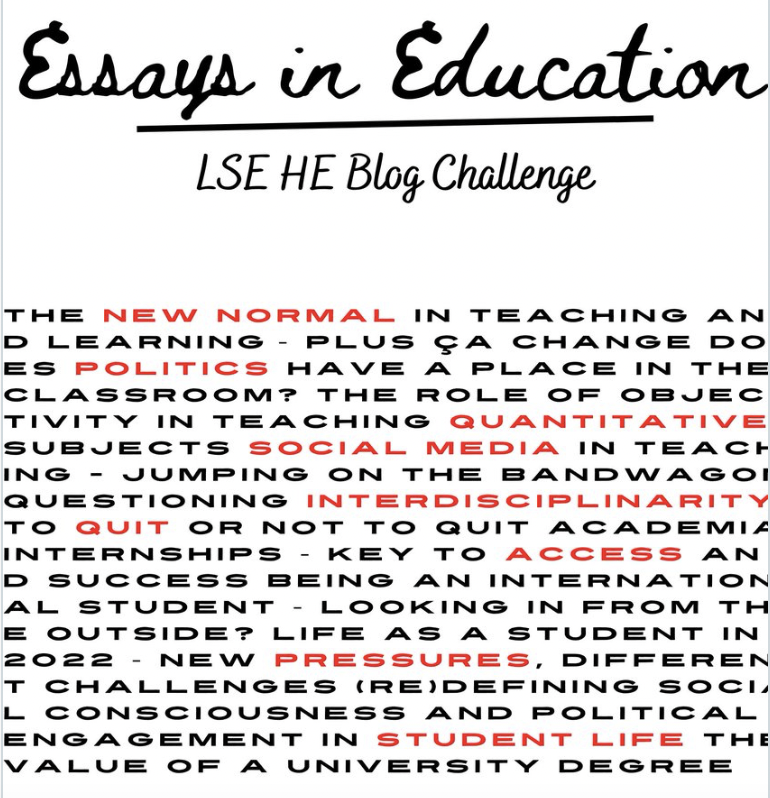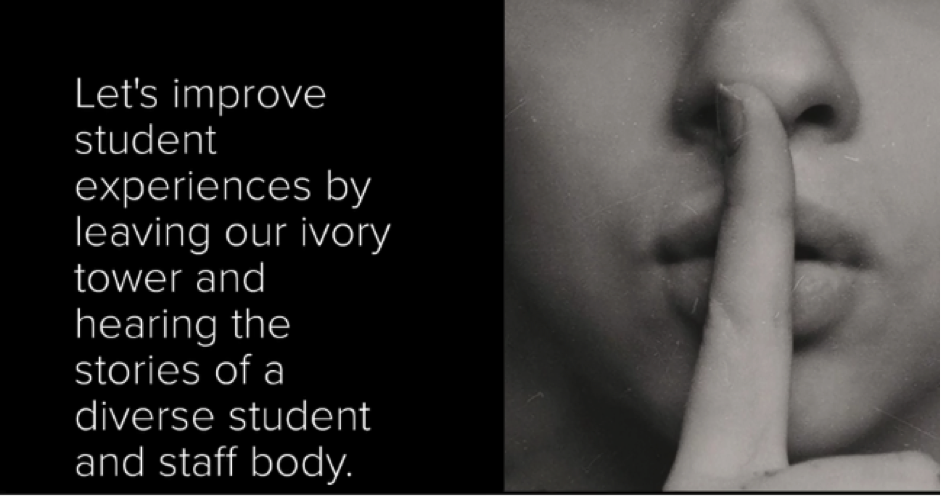As Twitter enters its death spiral, there is a plethora of social media alternatives for academics to consider moving to. Mark Carrigan advises
What the demise of Twitter means for academics
Twitter has been central in UK HE in the sense that it has been seen as the single most important gathering place on social media for academics. Individual academics have tended to see Twitter as the default place to have their social media presence. Research projects have also followed a formulaic pathway to impact where they set up a website and associated Twitter feed as standard.
As a result, Twitter has been institutionalised in UK HE, but in ways that have progressively undermined the value that the academic community can find in social media. As a platform, Twitter is very good at incentivising the pursuit of visibility and, since academics are already prone to metricising themselves, academic culture and social media culture have synergised into a quite unpleasant thing over time – a destructive, unhelpful place which many people were increasingly sucked into without a clear sense of why they were there.
I believe Twitter can now be a dangerous place for many academics.

One of the reasons Twitter was so engrossing for academics was that it combined two very different activities. Firstly, talking and engaging with wider publics; secondly, participation in research communities. Although they do not seem immediately compatible – how we talk to people in our academic communities is very different to how we talk to the wider public – there was a porousness to Twitter and an almost osmotic quality where it felt possible to do both at the same time. However, the risks involved in doing that have increased with time, and particularly under Elon Musk’s leadership after he sacked the team that monitored and censured hate speech. I believe Twitter can now be a dangerous place for many academics, particularly if they are from minoritised groups – a very large portion of the academic community. We should be taking that seriously in terms of choosing where to spend time and energy in the coming months.
My current concern is about how, in this moment, we can reclaim a sense of the more community-focused elements of how we use social media. As the social media platform landscape fragments, it will become a more specialised pursuit where, increasingly, you need a relatively sophisticated understanding of the incentives on different platforms, and a strategy about using scheduling software, for example, for maintaining a presence across multiple platforms. Any lingering sense of Twitter as a democratising space where academic hierarchies can be levelled, further falls apart under those conditions.
Alternative social media platforms for academics
If you’re an academic looking for a replacement social media platform, it’s not straightforward. If you already have a Twitter presence, particularly if it is for a project, organisation or network, it might make sense to keep it, even though we’re entering the death cycle of Twitter and it could be gone as a company in six to 12 months. If you’re already on there, I’d suggest spending a bit less time and energy, in recognition of the fact that the nature of the platform is changing. Cautiously continue and recognise how the landscape is changing and that, unless you are subscribing, your opportunities for visibility are going to continue to shrink.
Reflect on what it is you want to do and what you’re trying to achieve.
If you’re not already on Twitter, it is a case of wait and see. We’re in a situation now where it’s not clear that any of the alternatives will become the alternative. We’re entering a more fragmented landscape where the path to visibility and promotion is going to involve maintaining a presence across a whole range of platforms. However, the only way to have that presence effectively is to become your own digital comms officer and strategically maintain it, keeping track of how the platforms are changing. That’s a huge undertaking.
Post-Twitter options – in brief
- If you already have a presence and network on LinkedIn, lean into it – a sizeable portion of the academic Twitter community has migrated there.
- Limitations: a clunky interface; a horrible aesthetic; different norms around interaction and sustaining an online identity.
Threads
- Meta’s Threads is a case of out of the frying pan, into the fire.
- Limitations: it will inevitably soon turn on the advertising juggernaut; nobody in the EU can access it; quite alien norms for academics as it is based on Instagram networks.
Mastodon
- Mastodon’s federated design architecture is attractive but not designed to be a good fit with the kind of academic social media culture that has built up.
- Limitations: it is designed to avoid scale; involves a substantial learning curve; and requires a cultural shift.
- Whatsapp groups are familiar to most and can be effective for research discussions.
- Limitations: can be overwhelming when busy and exclusionary to those who cannot keep up with them; can erode the divide between public and private.
So, it’s a bad time to commit to using a new platform in a serious way. Under these conditions, it makes sense to reflect on what it is you want to do and what you’re trying to achieve.
If you are using social media in the hope that, in an incredibly complex and competitive landscape of publication, social media will turbocharge your visibility and help get your publications read and cited, it’s probably not going to have that effect for most academics. The time and energy spent doing it could probably be spent more productively on other things. That’s an individual decision.
If your goal is public engagement and you want to take a very strategic, committed, focused approach, you are likely to need funding for extra communications support to leverage your presence across multiple platforms.
If you’re trying to find out about opportunities and new developments, you need to explore the other ways you can do that. So, for example, I’m working on generative AI, and the newsletter platform Substack has come into its own for that. I’m learning much more with much less effort about generative AI from Substack newsletters than I have been from Twitter.
I’m increasingly convinced there isn’t going to be one single Twitter alternative because the marketplace of Twitter alternatives is so crowded. For an individual academic, the key is to experiment with a platform to get a sense of whether it works for you, and try to understand where the people you want to talk to are gathering, whether they are having the conversations you want to join, and whether those are a reflection of existing networks or involve people you don’t yet know. It’s the connections that are important.
University support for academics’ social media activity
The social spaces that have emerged through social media are part of the research infrastructure. Universities have long recognised that conferences are important to research culture even if they are upstream of the eventual research outputs which ultimately count. Academics need to go to conferences to meet people outside their institutions and keep in touch with current developments in their field. Arguably, social media is even further upstream than conferences, contributing to a whole range of collaborations further down the line, but in a way that is hard to quantify. Social media allows networks to coalesce at the very early stage, and all sorts of interactions and collaborations, projects and publications happen downstream of that.
Universities need to recognise that this kind of digital infrastructure is part of how academic communities coalesce and recreate themselves. It is particularly important for early-career researchers who do not have those networks and, in the post-pandemic environment, have less capacity for collaboration because there are fewer opportunities to meet face to face.
Universities could put resources into minimising the workload and technical difficulties in setting up bespoke community sites – for example, universities could support research groups to develop their own Mastodon instances or offer training in setting up a Discord server. These sorts of solutions create networks that will be more closed than Twitter but that can be mitigated by ensuring they are advertised and people have an opportunity to join easily.
Universities need to adapt to this new reality in terms of the advice they’re offering.
However, universities have traditionally missed the significance of social media by seeing it as a mechanism for public engagement, at best, rather than as part of the research infrastructure. My broader concern is that universities are still pushing the model of social media that was the norm throughout the 2010s – that every upwardly mobile ambitious academic needs to be highly visible on the dominant platform and be seen engaging on a regular basis. That was always bad advice, and, now, it is becoming counterproductive and, in some cases, dangerous, advice. Universities need to adapt to this new reality in terms of the advice they’re offering.
Twitter facilitated a social infrastructure for academic life in which a limited few with a big social media footprint were able to leverage it to advantage in their academic career, with greater visibility for their publications, a wide network and lots of opportunities. As that breaks down, our academic communities need to get much better at facilitating other modes of engagement so that we are never again so reliant on a big corporate platform.
- Mark Carrigan was speaking to Michelle Pauli
_______________________________________________________________________________________________________________________
This post is opinion-based and does not reflect the views of the London School of Economics and Political Science or any of its constituent departments and divisions.
_________________________________________________________________________________________________________________________
Image source: photo by EMRE YILMAZ on Unsplash






Really useful overview, thank you @Mark and @Michelle. I think perhaps there was a third function of academic twitter – not to overstate this – but it was possible to actually create publics and communities, in fast and slow time, with little more than a hashtag. A hashtag meant you could conjure an instant audience for a research seminar, or start a conversation that might evolve into a research paper, a community of practice, or even a movement. The community #femedtech, for example, started as a hashtag, became a curated twitter account, spawned several material projects, a code of practice, and a special issue of a major journal. The community #LTHEChat (https://lthechat.com/, every Wednesday 8-9pm GMT) is now also a web site, blog, organising team and community hub. These communities have far bigger footprints than most academic social media ‘stars’. There is dedicated work behind the hashtag – and the work of building community takes time out from building one’s own reputational capital – but without twitter and its specific social dynamics, it’s hard to think how these efforts would have had so much real impact. It is a significant loss.
Totally agree. I should have said building, as well as participating, in research communities. But did the social dynamic of Twitter contribute anything to this beyond the porousness of the network though? I imagine we could build these communities just as effectively elsewhere, the main problem being how to make them inclusive in terms of ease of discovery and entry.
Really enjoyed this article Mark, coming from the viewpoint of someone who did enjoy and benefit from Twitter in many of the ways you described. The network building was informative and at times directly useful, and it’s a shame many people didn’t see it that way, but rather saw it purely as a platform for self-promotion (I include individuals and universities)
From this, I really enjoyed your suggestion that universities should begin to realise the utility of social networks for exactly that, networking, rather than just publicising. University-specific Mastodon instances would actually seem like an excellent place to start, but it needs someone with that vision and time to guide others with them. And crucially other universities to also participate and offer other parallel networks that can then cross-talk (i.e. ActivityPub cross-networking etc…)
Overall, though, great article that provides food for thought on how to best navigate this transition phase of fragmentation and network re-establishment.
For an example of building academic communities on Mastodon, econtwitter.net has been running for several months, the domain itself, and concept, registered in November 2022.
While I’m not involved in the running of econtwitter, I see it, and Federation, an example of potential for innovation beyond the #140 limits. RePeC, for example, provide their firehose of new papers through ActivityPub subscriptions on top of existing RSS feeds http://nep.repec.org/
I do not see Mastodon as an end-point, but one of many tools that communities can use to construct themselves in new and diverse ways beyond the #, the 140, and the disempowerment that large platforms disincentivise (or, forced incentivise) many individuals and groups with.
For an example of building academic communities on Mastodon, econtwitter.net has been running for several months, the domain itself, and concept, registered in November 2022.
While I’m not involved in the running of econtwitter, I see it, and Federation, an example of potential for innovation beyond the #140 limits. RePeC, for example, provide their firehose of new papers through ActivityPub subscriptions on top of existing RSS feeds http://nep.repec.org/
I do not see Mastodon as an end-point, but one of many tools that communities can use to construct themselves in new and diverse ways beyond the #, the 140, and the disempowerment that large platforms disincentivise (or, forced incentivise) many individuals and groups with.
Linkedin? Really? No!
I’ve been using Mastodon and find that it’s ideal.
A learning curve? Did we forget that Twitter was once new to us as well?
Provided people stay with us, help will be provided as it was with Twitter.
Give it a try, the water is warm!
I cannot and never will take social media seriously. I have visited them all, in various guises and NOTHING good has ever come of it. It always feels like I am in the pub with a load of halfwits and drunks. I have tried to get on the sensible, serious educational tack but am always invaded by stupidity, vanity, self-promotion and VERY little substance. I realise that this is not the same for everyone and there appear to be some teeny tiny glimmers of goodness. However, those glimmers of goodness are too few and far between. Anyone with a little sense and tech clout could have done all those marvellous things WITHOUT Twitter et al. Get over it folks.